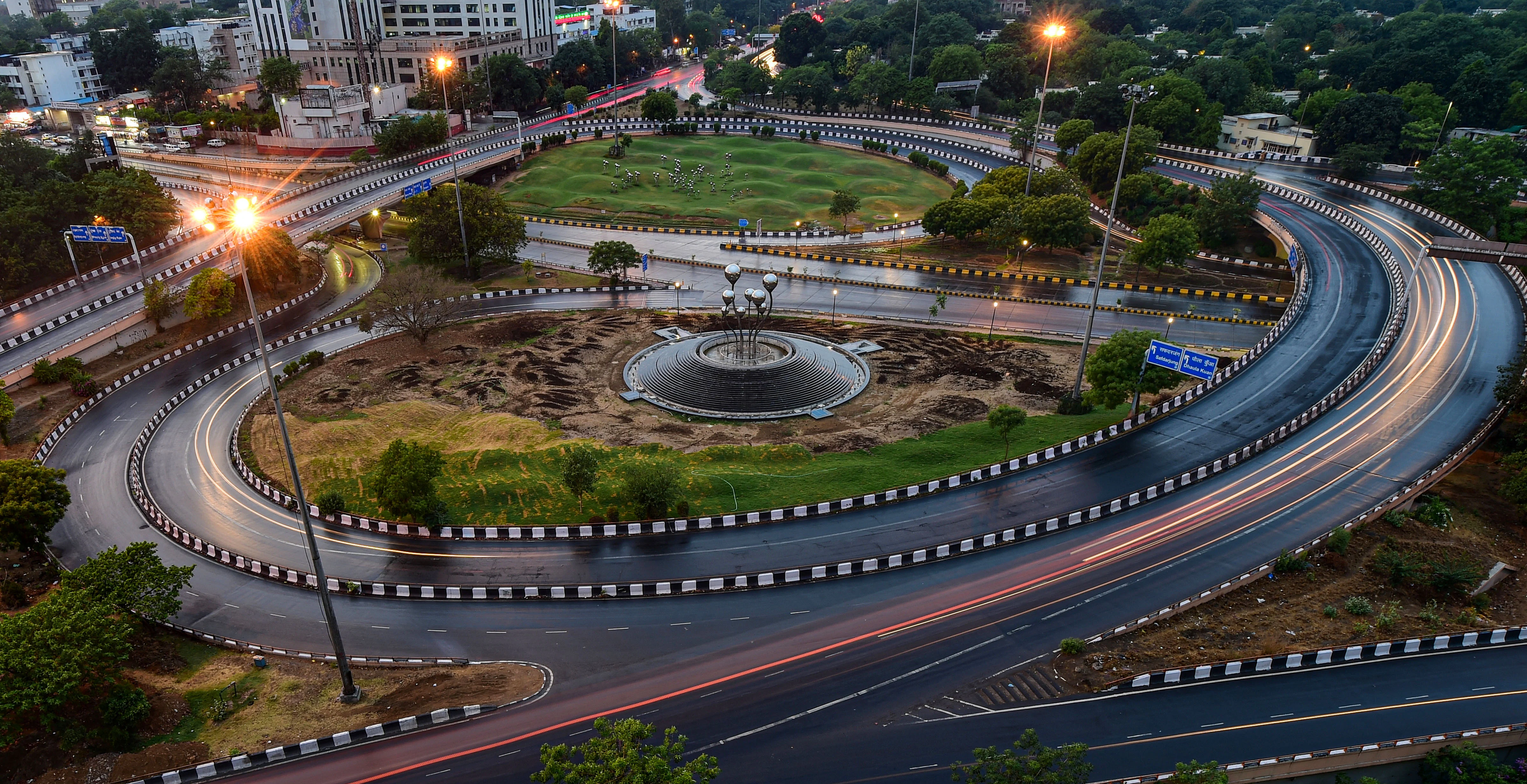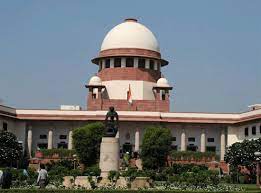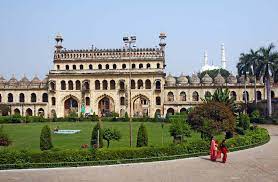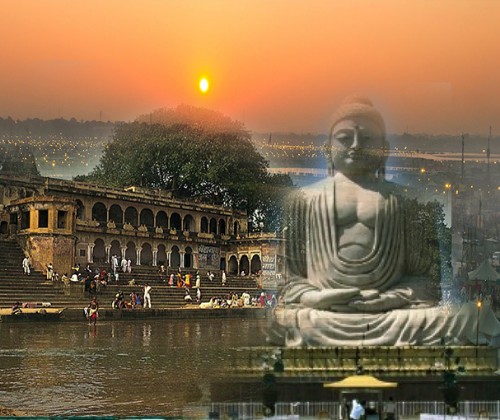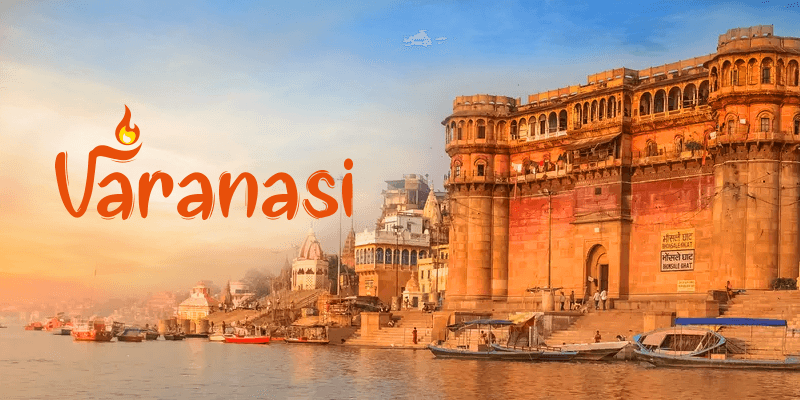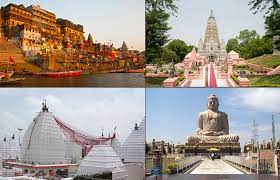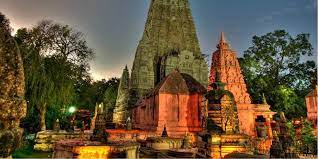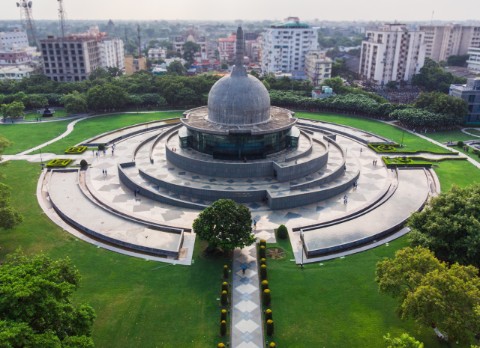Footsteps of Buddha
Route : Delhi Lucknow Sravasti Lumbini Kushinagar Varanasi Bodhgaya Rajgir Patna
10Days 9 Nights
Overview
Footsteps of Buddha
Location Map
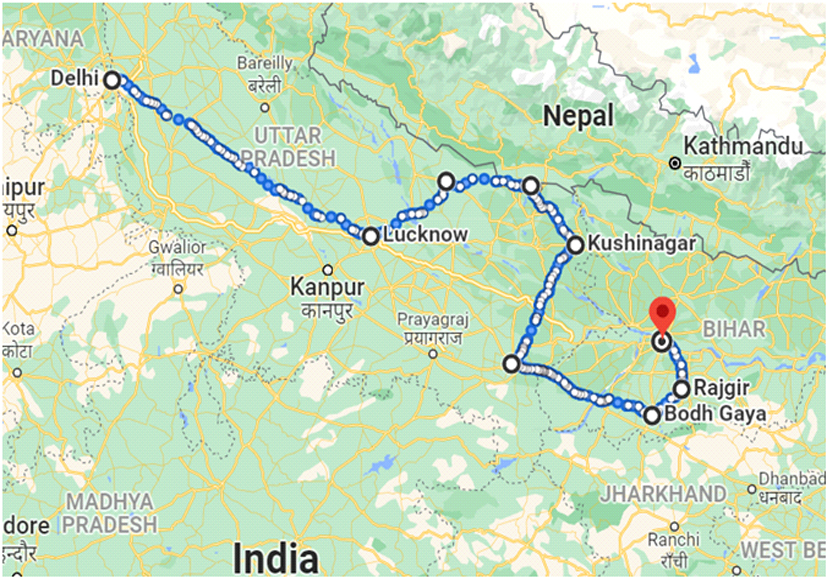
Itinerary
-
1Day 1 : ARRIVE DELHI
Meeting and assistance on arrival and transfer to Hotel Overnight stay at hotel
-
2Day 2 : DELHI
Breakfast at hotel Later city sightseeing of Old and New Delhi Visit the 7 th city of Delhi, Shahjahanabad (Old Delhi), built by the Mughal Emperor Shah Jahan (1639-48 AD) after he shifted his capital from Agra to Delhi. Visit Raj Ghat on the banks of the river Yamuna, Mahatma Gandhi’s Memorial, where he was cremated following his assassination in January 1948. An eternal flame burns 24 hours. Later proceed for New Delhi. Visit the mausoleum of emperor Humayun - a forerunner of the Mughal style of architecture. Drive past the India Gate (war memorial dedicated to the lives of laid down by the Indian soldiers), the president's residence - formerly the Viceroy's Palace, parliament House and the Secretariat buildings, - an interesting blend of the Victorian and 20th century architecture. Overnight stay at hotel
-
3Day 3 : DELHI - LUCKNOW by train Lucknow Shatabdi / 0615-1235 hrs LUCKNOW - SRAVASTI by surface 170 Kms / 3 – 4 Hrs
In time transfer to railway station to board your train Lucknow Shatabdi for Lucknow, meeting and assistance on arrival and drive to Sravasti, upon arrival transfer to hotel Overnight at hotel
-
4Day 4 : SRAVASTI - LUMBINI bysurface 190 Kms / 3-4 Hrs
After breakfast visit to Sahet & Mahet -15 kms from Balrampur and the capital of the ancient Kingdom of Kosala. Sravasti has the honour for sheltering Buddha for 24 rainy seasons in the Jetvana Vihar and has the famous Anand Bodhi tree, age-old stupas, majestic monasteries and several temples. Buddha is said to have performed some miracles here. Later drive to Lumbini, upon arrival check in at hotel, Lumbini is situated at the foothills of the Himalayas in modern Nepal. The holy site is being developed with international support as the supreme Buddhist pilgrimage and a symbol of world peace. The shrines and monasteries that many countries have built or are still building reflect the architectural traditions of those countries, and thus giving Lumbini an international feel with a message of universal love and brotherhood. Overnight at hotel
-
5Day 5 : LUMBINI - KUSHINAGAR by surface 175 Kms / 3-4 Hrs
After breakfast Morning visit Birth place of Budhha, later in time drive to Kushinagar, upon arrival check in at hotel Evening join prayer ceremony at temple, Overnight at hotel
-
6Day 6 : KUSHINAGAR - VARANASI by surface 280 Kms / 6-7 Hrs
After breakfast, sightseeing tour of Kushinagar Nirvana Stupa, This huge brickwork Stupa, exposed by Carlleyl in 1867, Nirvana Temple, this houses the over 6 meters long statue of reclining Buddha, Mathakuar Shrine , this Shrine lies about 400 yards from the Parinirvana stupa, Japanese Temple , a beautiful Ashta Dhatu (eight metlas) statue of Lord Buddha, which came from Japan, Kushinagar Museum, The museum has 248 precious antiques related to coins, statues and sculptures, architectural remains & bronze statues, Japanese Garden The park can be partially viewed as a rock garden, Buddha Vihar , the Myanmar Buddha Vihar, first Monastry in Kushinagar, Mahaparinirvana Temple. A huge "Samridhi Chaitya" Stupa which will contain 5000 brass statues of Lord Buddha. Later in time drive to Varanasi, upon arrival check in at hotel Overnight at hotel
-
7Day 7 : VARANASI
Early morning take a boat ride for a pilgrimage from Ghat to Ghat. People bathe early in the morning to offer the prayers to the rising sun. The two cremation ghats are Manikarnika &Harish Chandra where funeral pyre burns day and night. Every pious Hindu believes that to die in Kashi and to be cremated on banks of the Ganges is to attain release from the cycle of birth and death. Varanasi - Hindus holiest city and one of the oldest living cities in the world. Varanasi was already old when Rome was founded, a flourishing trade centre when the Buddha came to Sarnath to preach his first sermon. It was a city of great wealth and religious important when the Chinese travelers Hiuen Tsang visited in the 7th century. After breakfast take an excursion tour to Sarnath, located at 10 Kms from Varanasi where Lord Buddha gave his first sermon to the five holy men; visit at Dharmarajika Stupa The 110 ft tall Dhamekh Stupa marks the place where Buddha preached first sermon., also visit to Archaeological museum, the collection of ancient Buddhist relics and antiques comprising numerous Buddha and Bodhisattva images, also see the Ashok Pillar with 4 lions, built in 3rd Century BC., symbolize both Ashoks's imperial rule and the kingship of the Buddha. The four-lion capital was adopted as the emblem of the modern Indian republic. Evening walk through the myriad of narrow lanes in the old city, past the many ancient temples, shrines and little shops crammed with customers looking for the famous silver & gold brocades for weddings or even for cremation cloth. Explore the oldest cultural city of India, by visiting the aarti ceremony on river Ganges. Overnight at hotel
-
8Day 8 : VARANASI - BODHGAYA BY SURFACE 242 Kms/ 6-7 Hrs
Breakfast at hotel In time drive to Bodhgaya, upon arrival check in at hotel Overnight at hotel
-
9Day 9 : BODHGAYA - RAJGIR BY SURFACE 242 Kms/ 6-7 Hrs
After breakfast visit Bodhgaya, visit the Mahabodhi Temple. Bodhgaya- the place where Lord Buddha attained Enlightenment under the sacred Bodhi Treefollowed by visit to Chinese Temple Later in time drive to Rajgir En route visit Nalanda. Nalanda is believed to be the oldest university in the world. Founded in the 5th century BC, it became a renowned centre of Buddhist and Jain learning. Hiuen Tsang, the Chinese traveler, spent several years here in the 7th century AD. Nalanda Archaeological Museum has a magnificent collection of Pali and Mauryan statues, bronze and manuscripts. Nalanda Mahavihara an institute for the study of Pali literature houses rare Buddhist manuscripts. Though Buddha visited Nalanda several times during his lifetime, this famous centre of Buddhist learning shot to fame much later, during 5th - 12th centuries. Later proceed to Rajgir the ancient capital of Magadha kings. The Buddha often visited Rajagriha to retreat at the Jivkamaravana monastery, preaching and meditating on the Gridhakuta Hill. The disciples of the Buddha built many structures here. Rajgir is also sacred to Jains as Lord Mahavira studied and meditated here. The first Buddhist Council was held here after the Buddha's nirvana; later check in at hotel. Overnight at hotel.
-
10Day 10 : RAJGIR - PATNA BY SURFACE 95 Kms/ 1-2 Hrs FINAL DEPARTURE PATNA
Breakfast at hotel In time transfer to Patna airport to board your flight for onward destination
